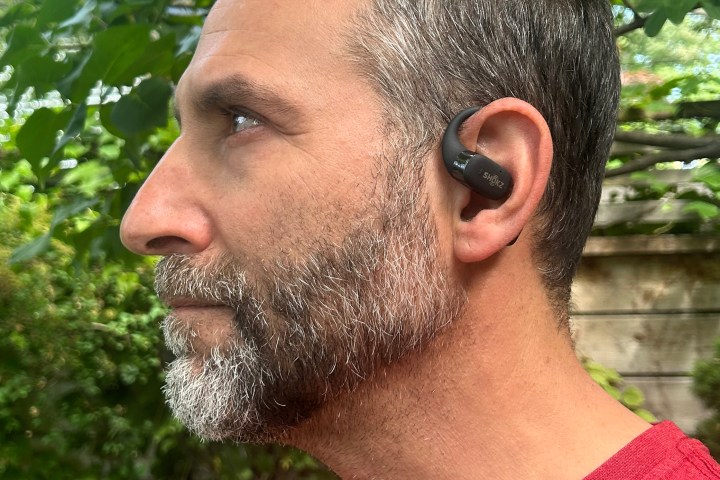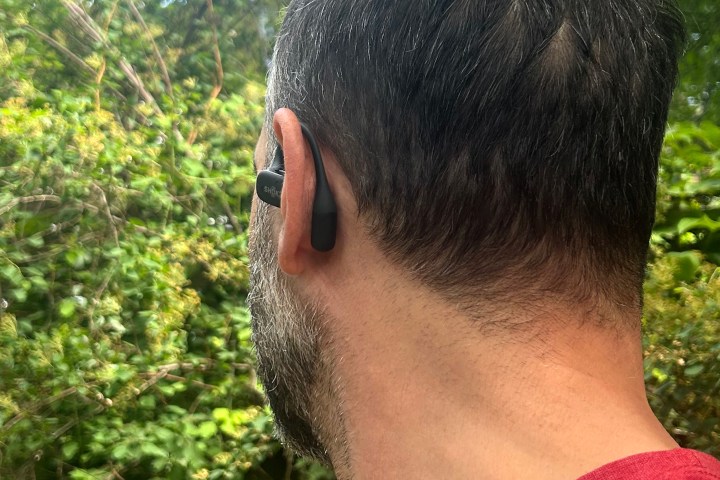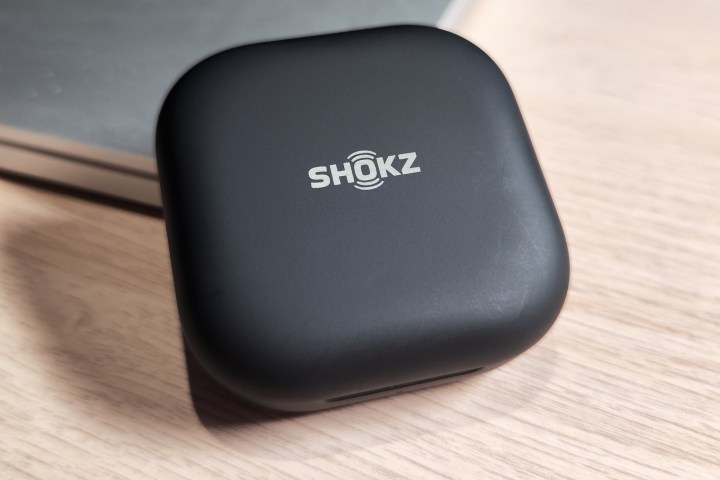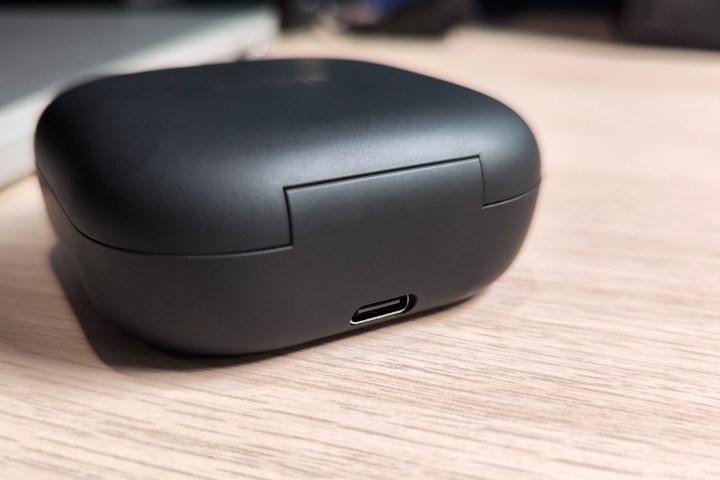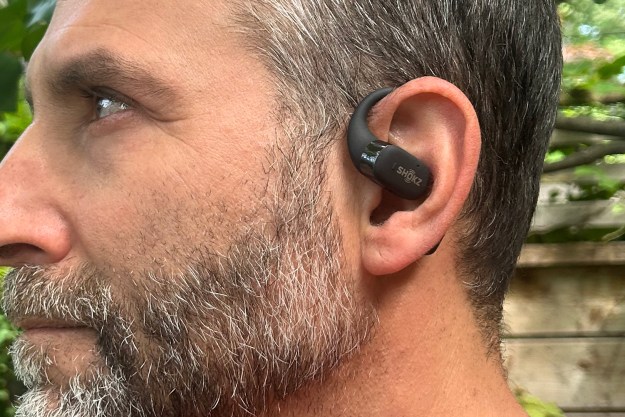
“The OpenFit won’t blow you away on sound quality, but they’re incredibly comfy.”
- Incredibly comfortable and secure
- Stay fully aware of your surroundings
- Very good call quality
- Good battery life
- Mediocre sound quality
- Not great for noisy locations
- No multipoint or wireless charging
Whether you spend $25 or $250 on a set of wireless earbuds, even the best-fitting pair eventually will cause fatigue and you will breathe a sigh of relief when you remove them. Not so with the OpenFit, a new set of open-style earbuds from Shokz. Available starting June 28, the OpenFit ($180) come in black or beige and are crafted from ultra-soft and flexible silicone rubber and loop around your ear instead of being wedged inside it. Less than a minute after putting them on, I had completely forgotten I was wearing them.
If it weren’t for some fairly significant compromises on features and sound quality, I’d want them as my exclusive go-to headphones. But I’ll get to that in a moment.
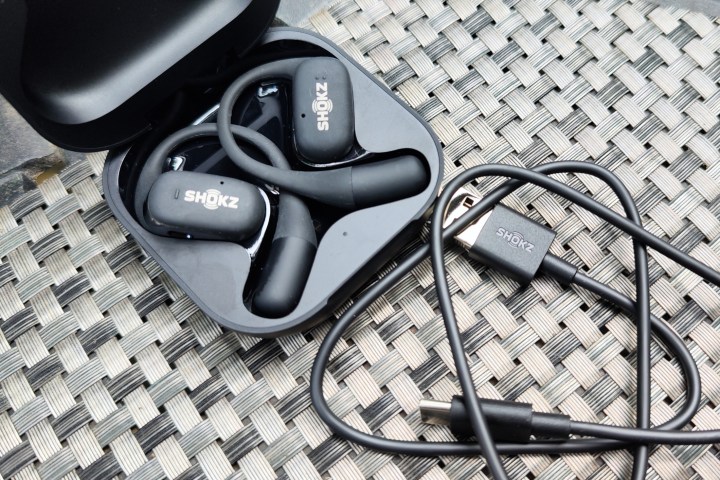
Shokz (formerly AfterShokz), as its fans already know, is no stranger to the world of open-style headphones. The company’s line of bone-conduction headsets is a favorite of athletes. The neckband design stays firmly anchored in place and they let you hear your music without blocking any of the sounds around you — a key benefit when you need to listen to your coach, your training partner, or simply that truck that is barrelling toward the very intersection you’re trying to cross.
Still, bone-conduction headphones aren’t for everyone. When you send vibrations directly to your inner ear via your skull — you lose fidelity (particularly bass) — and those vibrations can get tiresome as can the clamping force needed to keep the transducers in tight contact with your head.
The OpenFit are different. They use so-called air conduction, meaning that the sound travels through the air (instead of your skull) before reaching your eardrum. Yes, that’s exactly how regular earbuds work too, but with open-fit designs, there’s a much bigger distance between the tiny speakers in the earbuds and your eardrum, so the speakers are usually much larger — and much louder. With no silicone eartips or anchor wings, they’re truly one-size-fits-all — something that’s rarely true in the conventional wireless earbud world.
They’re also extremely light at 0.29 ounces (just 0.1 ounces heavier than the Apple AirPods Pro) and they exert no pressure on your head. And yet, they cling to your ears so securely, you’ll be able to run or do your workouts without worrying about them dropping off. With an IP54 rating for water and dust resistance, as long as you don’t submerge them, they should have no problem with rain or sweat (just wipe them off when you’re done).
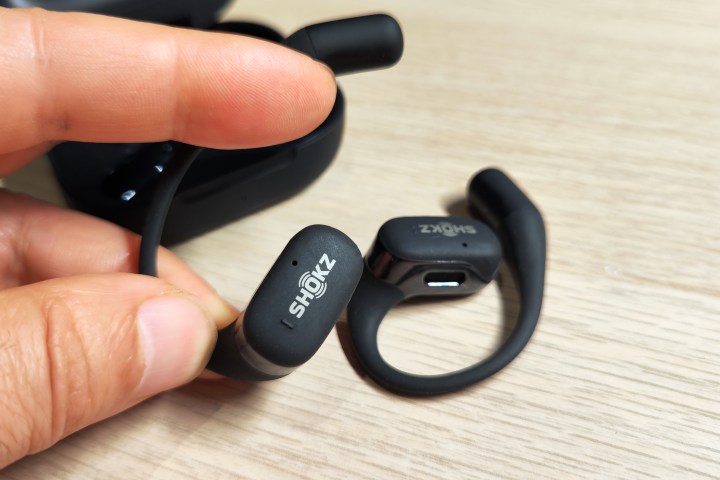
Shokz told me that the company has been working on the OpenFit since Bose effectively created the open-style air conduction category with its now-discontinued Bose Sport Open earbuds. But there was concern within the Shokz team that maybe air-conduction couldn’t really bridge the gap between regular earbuds and bone-conduction headphones — a fear that Bose’s decision to abandon the Sport Open seemed to justify.
While Shokz was debating, its competitors were moving — fast. In 2022, we took a look at the Sport Open and their two leading alternatives, the Cleer Audio Arc and Oladance Wearable Stereo (OWS), both of which proved that open-style air-conduction could be done successfully — especially the Oladance. Both companies are now on their second-gen versions and Oladance will soon release a third-gen device, the OWS Pro.
This partially explains the absence of some features I was expecting on the OpenFit. When the Bose Sport Open debuted in January 2021 for $200, they lacked wireless charging and Bluetooth Multipoint. So did the Arc and the OWS. The OpenFit don’t have these features either, but the latest generation of open-style earbuds from Cleer Audio — the $190 — have both.
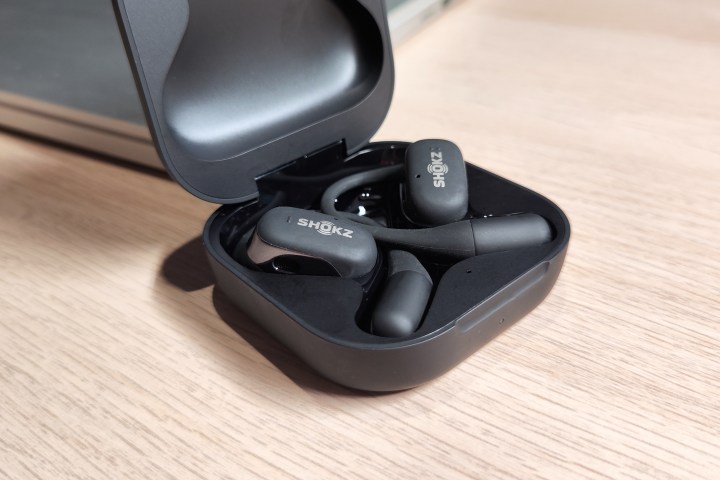
Still, the OpenFit do come with their own charging case, which extends the life of the earbuds from their basic, up-to-seven hours per charge, to 28 hours of listening. That’s something the Bose, Arc, and OWS all missed when they began this race. Take those battery claims as guidelines. They’re based on 50% volume, which is probably enough for indoors, but definitely not when outside. Phone/video calls will also wear the batteries down faster.
The touch controls work well — once you get used to their slightly angled surface — but they are severely limited. By default, a double tap on either side will perform play/pause, while a tap-and-hold gesture will skip forward using the right earbud and skip backward using the left. That’s all you get. There are also no built-in wear sensors, so removing one or both earbuds won’t automatically pause your audio.
The free Shokz companion app (iOS/Android) lets you customize these a bit, but your choices remain constrained. The right-side double tap can be swapped for your choice of skip forward, skip back, and voice assistant access, meanwhile the tap-and-hold gesture can be swapped for volume control or voice assistant access. This means that if you control the volume and have access to Siri or Google Assistant, you must give up the ability to switch tracks. Want volume control and track skipping? You’ll have to choose forward or backward, and you’ll have to make do without your voice assistant.
When it comes to audio quality, the OpenFit are typical for a set of open-style earbuds. Sitting in a quiet room, they can deliver nearly full-frequency sound. Shokz promises a “powerful bass experience” but that must be a comparison to the company’s bone conduction headphones — compared to regular earbuds, bass is mediocre at best.
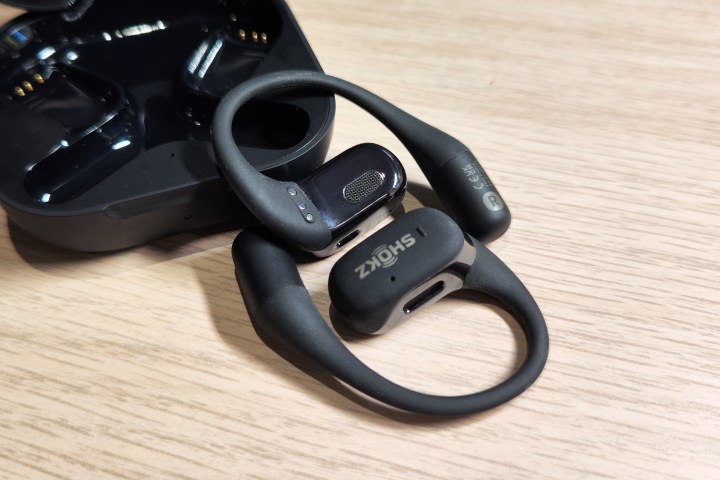
That’s not a criticism of the OpenFit per se. I’ve yet to hear any air-conduction earbuds that actually deliver what I’d call powerful bass. They’re at their best with pop music or any other genre that doesn’t rely on a pounding beat, which might give you pause if your workout playlists are heavy on rap and hip-hop. The app includes several EQ presets and the ability to set your own EQ parameters, but I found that even with the lowest frequencies boosted to the max, bass was only just OK. I was glad, however, of the ability to de-emphasize the higher frequencies, which can get painfully sharp if left at the default EQ setting.
You should also set your expectations in terms of resolution — I found that most music sounds as though it has been compressed. This also seems to be a common effect among air-conduction earbuds.
What you do get is a natural, airy sound — like someone had placed small, invisible stereo speakers beside your head.
Outdoors, things become a bit more challenging. It takes a powerful, high-quality driver and acoustic system to direct sound into your ear without being overcome by competing outside sounds. Virtually all open-fit air-conduction earbuds will fail that test in noisy environments, and the Shokz OpenFit are no exception.
To be fair, it’s less of a concern for music than it is for spoken content. If you miss a few bars of your favorite track, it’s not the end of the world. But even a momentary dropout during a podcast or an audiobook can make you reach for the rewind button. Keep in mind, phone calls are also a type of spoken content.
My advice is that you consider where you’ll be using the OpenFit most often. Indoor gyms that aren’t too crazy with loud spinning classes or treadmills cranked to a full sprint, should be fine, and if your daily run takes you through a park, a beach, or even quiet residential areas, those will work too. Office environments are ideal, as long as they’re not too noisy.
Speaking of offices, despite the frustrating lack of Bluetooth Multipoint, Shokz OpenFit might just be the best earbuds ever made for the workday. Because they’re so comfy, you can leave them on all of the time, and their call quality is very good, whether you’re indoors or outdoors, making them ideal for both video and phone calls. It’s also hard to overstate the convenience of being able to leave them on your ears when you’re done with a call. The only downside is that there are no visible indicators to tell others when you’re on a call, so your coworkers or family may look at you with that head-tilt expression of “are you on the phone?”
My wife is as an accomplished ice dancer and she borrowed the OpenFit for a few of her training sessions. They let her hear her coach, her dance partner, her dance music (when she was training solo), and perhaps most importantly, she was also able to hear the other skaters — a constant hazard when you don’t have a rink all to yourself. She’s tried several open-style earbuds lately and so far, the OpenFit are her favorites.
Open-style air conduction earbuds might not be the silver bullet for folks who want great sound quality and great situational awareness, but if you’re good with their inherent tradeoffs, the Shokz OpenFit are just about perfect if you need earbuds you can wear for long periods of time. Their comfort and secure fit are the best you can get right now, and that might just make up for their relatively low-fi audio quality and lack of advanced features.
Editors’ Recommendations
Services Marketplace – Listings, Bookings & Reviews

